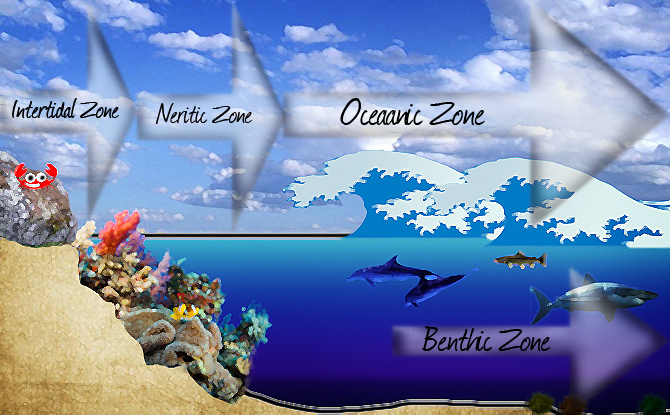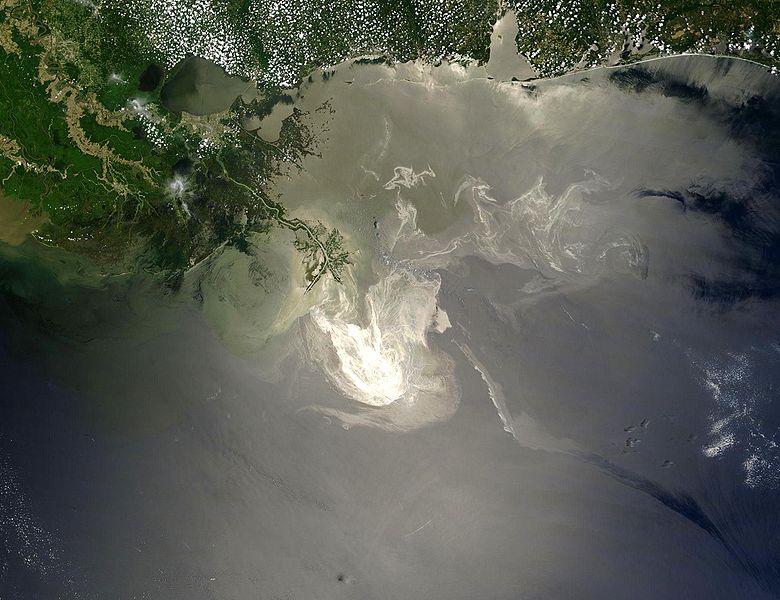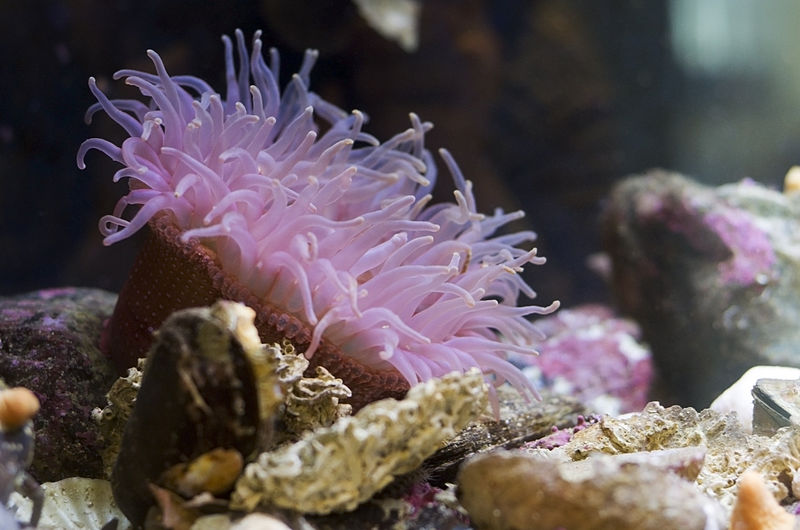Habitat and Geography
WHAT AREA OF THE WORLD CAN THE SPOTTED PORCELAIN CRAB BE FOUND?
 The Spotted Porcelain Crab has a very unique habitat in more ways
than one. These crabs are commonly found within all the world’s
oceans, except for the Arctic and Antarctic. They are most widely
distributed in the Indo-West Pacific. From the East coast of Africa to
Christmas Island and Western Australia, Bismarck Archipelago,
Queensland, Moluccas, Palau, Taiwan, Ryukyus, Marshall and Fiji
Islands (Milne Edwards, 1837).
The Spotted Porcelain Crab has a very unique habitat in more ways
than one. These crabs are commonly found within all the world’s
oceans, except for the Arctic and Antarctic. They are most widely
distributed in the Indo-West Pacific. From the East coast of Africa to
Christmas Island and Western Australia, Bismarck Archipelago,
Queensland, Moluccas, Palau, Taiwan, Ryukyus, Marshall and Fiji
Islands (Milne Edwards, 1837).
WHAT ZONE OF THE OCEAN CAN THIS CRAB BE FOUND IN?
The Spotted Porcelain Crab lives within a specific zone of the
ocean, commonly referred to as the littoral zone, or intertidal
zone.
Within
the intertidal zone of the ocean, there are high and low tides
throughout the day. With living in the vast ocean, not only do
organisms have to watch for predators, but also other threatening
factors such as exposure to rough conditions. Organisms that live
within the high tide zone, often face dangers such as exposure to
the atmosphere where heat and bright sunlight can harm an organism
(Gardiner, 2010).
 On
the complete opposite end of the
spectrum, organisms that live within the low tidal zones are faced
with strong, pounding undercurrents (Gardiner, 2010). Surprisingly,
the intertidal zone is home to multiple organisms such as the
Pacific cleaner shrimp,
stonefish, and even other sea anemones, like the
ritteri anemone. Other common organisms include the rock
louse, buckshot barnacle, mussels, and sea stars.
Even though this environment is home to a wide range of organisms,
they all have one thing in common; they have to be able to survive
extreme conditions (Gardiner, 2010). The intertidal zone varies in
depth, depending on the body of water, but within the intertidal
zone the Spotted Porcelain Crab can survive in conditions from the
high tide zone, through the low tide zone. In other words, it can
survive anywhere from the very surface of the ocean to 67 feet below the
surface (Shedd Aquarium, 2001).
On
the complete opposite end of the
spectrum, organisms that live within the low tidal zones are faced
with strong, pounding undercurrents (Gardiner, 2010). Surprisingly,
the intertidal zone is home to multiple organisms such as the
Pacific cleaner shrimp,
stonefish, and even other sea anemones, like the
ritteri anemone. Other common organisms include the rock
louse, buckshot barnacle, mussels, and sea stars.
Even though this environment is home to a wide range of organisms,
they all have one thing in common; they have to be able to survive
extreme conditions (Gardiner, 2010). The intertidal zone varies in
depth, depending on the body of water, but within the intertidal
zone the Spotted Porcelain Crab can survive in conditions from the
high tide zone, through the low tide zone. In other words, it can
survive anywhere from the very surface of the ocean to 67 feet below the
surface (Shedd Aquarium, 2001).
 The
intertidal zone also contains large rocks that tend to pile up and are
the result of rocky coastlines, which is a common places for
organisms to seek shelter. Large boulders often leave crevices and
tidal pools for organisms to seek shelter in (Gardiner, 2010). Those
crack and tidal pools are the ideal living conditions for the
Spotted Porcelain Crab and other organisms as well.
The
intertidal zone also contains large rocks that tend to pile up and are
the result of rocky coastlines, which is a common places for
organisms to seek shelter. Large boulders often leave crevices and
tidal pools for organisms to seek shelter in (Gardiner, 2010). Those
crack and tidal pools are the ideal living conditions for the
Spotted Porcelain Crab and other organisms as well.
WHAT ARE CURRENT ISSUES WITH THE HABITAT?
Currently, the reoccurring topic discussed in the eyes of politicians
is how to maintain a healthy ecosystem. For the past few decades, human
development and advances have caused their natural habitat to
disappearing before our eyes.
 Their
natural rocky shores are being overrun with pollution. Pollution is
a general term to describe the destruction of an environment. The
main pollution factor that impact the ocean are oil spills and agricultural runoff (Monterey Bay Aquarium,
2014). Those main factors as well as many others, are threatening
the habitat of the Spotted Porcelain Crab, as well as many other
organisms. Another contributor to their ever decreasing numbers is the
lack of human knowledge. The Spotted Porcelain Crab is not much larger than a
single Christmas tree light bulb, and trampling through a tidal pool
or disturbing a sea anemone could cause devastation to their habitat. The Spotted Porcelain Crab
is not on the International Union for Conservation of Nature (IUCN)
“Red List”, but their habitat is still being destroyed (British
Broadcasting Corporation, 2010). It is only a matter of time before
the species name appears on the list.
One of the first strides in maintaining and improving the
Spotted Porcelain Crab’s habitat is making our population more aware
of these unique organisms. Once our general public is informed,
people will have more respect for these creatures and hopefully get
motivated to better educate themselves of other possible endangered
species.
Their
natural rocky shores are being overrun with pollution. Pollution is
a general term to describe the destruction of an environment. The
main pollution factor that impact the ocean are oil spills and agricultural runoff (Monterey Bay Aquarium,
2014). Those main factors as well as many others, are threatening
the habitat of the Spotted Porcelain Crab, as well as many other
organisms. Another contributor to their ever decreasing numbers is the
lack of human knowledge. The Spotted Porcelain Crab is not much larger than a
single Christmas tree light bulb, and trampling through a tidal pool
or disturbing a sea anemone could cause devastation to their habitat. The Spotted Porcelain Crab
is not on the International Union for Conservation of Nature (IUCN)
“Red List”, but their habitat is still being destroyed (British
Broadcasting Corporation, 2010). It is only a matter of time before
the species name appears on the list.
One of the first strides in maintaining and improving the
Spotted Porcelain Crab’s habitat is making our population more aware
of these unique organisms. Once our general public is informed,
people will have more respect for these creatures and hopefully get
motivated to better educate themselves of other possible endangered
species.
Next, learn about the unique adaptations of the Spotted
Porcelain Crab by clicking
here.
If you would rather return to the home page ,click here.
